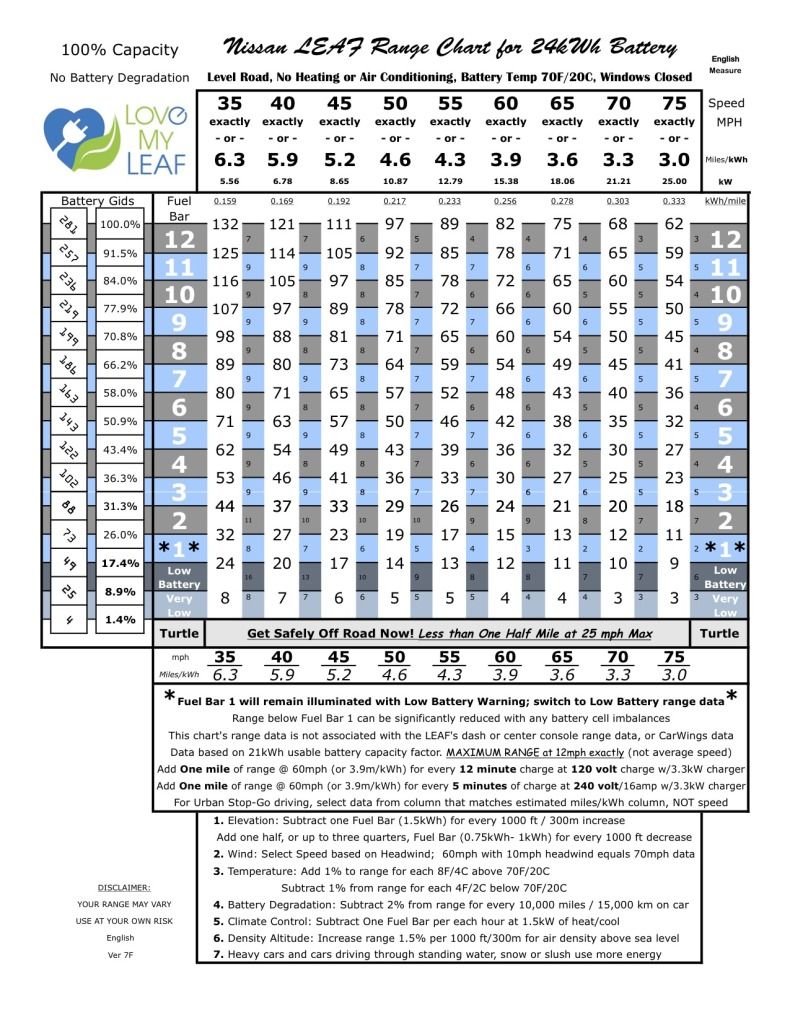TonyAndTina
Active member
Hi all,
I have been a lurker for awhile and finally decided to join the forum now that we are getting closer to make the purchase. But there is just a little bit of concern in the back of my head that worries me. It has to do with battery degradation and the range chart. Just want to get your thoughts on whether or not the Leaf is right for us (purchase).

A little background on us and how the Leaf will be used:
2 years ago, our first Altima (94) finally gave out and we were down to 1 car (07 Altima). We were able to make it work with just 1 car since the wife commutes in the car and I commute on motorcycle. Every now and then, we would need to use a second car, we would borrow our in-law's van. It had worked for us but not ideal. Now we are considering getting a commuter for the wife, hence the Leaf discussion.
My wife commutes about 24 miles each way, from Kent, WA to Elliott Bay in Seattle. 20 miles of that is on the freeway. Based on the range chart, at 0% degradation, 80% of daily charge would be perfectly fine for her to commute in a Leaf. He might be able to run some errands on the way home. My concern would be how much battery degradation would occur in the next 3-5years and beyond? Would we still be able enough juice in the "tank" to cover that range (+/- with weather factoring in)?
Also, would we be able to get by with just the 110V outlet or would you recommend the 220V EVSE (notice I didn't say charger. I have been reading the forum).
We are considering the SV with Quick Charge
Thanks for your input.
Tony and Tina
I have been a lurker for awhile and finally decided to join the forum now that we are getting closer to make the purchase. But there is just a little bit of concern in the back of my head that worries me. It has to do with battery degradation and the range chart. Just want to get your thoughts on whether or not the Leaf is right for us (purchase).

A little background on us and how the Leaf will be used:
2 years ago, our first Altima (94) finally gave out and we were down to 1 car (07 Altima). We were able to make it work with just 1 car since the wife commutes in the car and I commute on motorcycle. Every now and then, we would need to use a second car, we would borrow our in-law's van. It had worked for us but not ideal. Now we are considering getting a commuter for the wife, hence the Leaf discussion.
My wife commutes about 24 miles each way, from Kent, WA to Elliott Bay in Seattle. 20 miles of that is on the freeway. Based on the range chart, at 0% degradation, 80% of daily charge would be perfectly fine for her to commute in a Leaf. He might be able to run some errands on the way home. My concern would be how much battery degradation would occur in the next 3-5years and beyond? Would we still be able enough juice in the "tank" to cover that range (+/- with weather factoring in)?
Also, would we be able to get by with just the 110V outlet or would you recommend the 220V EVSE (notice I didn't say charger. I have been reading the forum).
We are considering the SV with Quick Charge
Thanks for your input.
Tony and Tina



